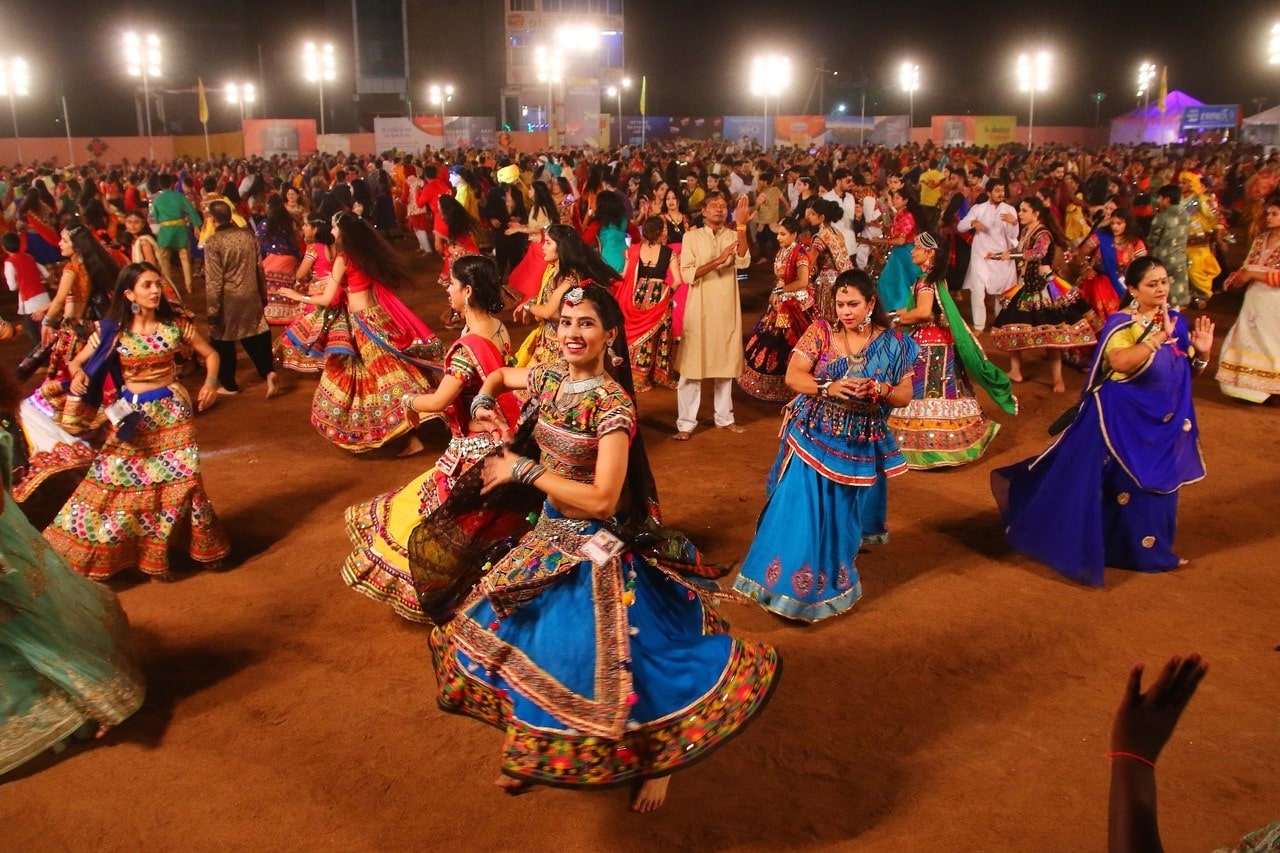
Navratri is one of the most vibrant and celebrated festivals in India, spanning nine nights and ten days. It honors the divine feminine energy, known as Shakti, and involves worship, dance, music, and fasting. Each day is dedicated to a different form of the goddess Durga, symbolizing the victory of good over evil. People from various regions and cultures come together to participate in traditional dances like Garba and Dandiya. Temples are adorned with lights, and streets buzz with festive fervor. Curious about the rich traditions and customs of Navratri? Here are 28 fascinating facts that will deepen your understanding of this joyous festival.
Key Takeaways:
- Navratri is a vibrant Hindu festival celebrating the goddess Durga over nine nights. It includes colorful traditions, dances, and fasting, symbolizing the victory of good over evil.
- Colors play a significant role in Navratri, with each day associated with a specific color symbolizing different emotions and qualities. The festival is celebrated across India with diverse rituals and traditions.
What is Navratri?
Navratri is a vibrant Hindu festival celebrated across India and other parts of the world. It spans nine nights and is dedicated to the worship of the goddess Durga. Here are some fascinating facts about this colorful festival.
- Navratri means "nine nights" in Sanskrit.
- The festival is celebrated four times a year, but the most significant one is Sharada Navratri, which occurs in the autumn.
- Each day of Navratri is dedicated to a different form of the goddess Durga.
- The festival symbolizes the victory of good over evil.
- Navratri is celebrated with dance, music, fasting, and feasting.
The Significance of Colors in Navratri
Colors play a crucial role in Navratri celebrations. Each day is associated with a specific color, and devotees often wear clothes of that color.
- The first day is associated with the color yellow, symbolizing joy and happiness.
- Green is the color for the second day, representing growth and renewal.
- The third day is dedicated to the color gray, symbolizing balanced emotions.
- Orange is the color for the fourth day, representing energy and warmth.
- The fifth day is associated with white, symbolizing purity and peace.
- Red is the color for the sixth day, representing passion and love.
- The seventh day is dedicated to the color royal blue, symbolizing divine energy.
- Pink is the color for the eighth day, representing compassion and harmony.
- The ninth day is associated with purple, symbolizing ambition and power.
Navratri Celebrations Across India
Navratri is celebrated differently in various parts of India, reflecting the country's rich cultural diversity.
- In Gujarat, people perform Garba and Dandiya Raas dances every night.
- West Bengal celebrates Durga Puja during Navratri, with elaborate pandals and idols of the goddess Durga.
- In Maharashtra, people set up Golu, a display of dolls and figurines.
- In Tamil Nadu, families invite friends and relatives to view their Golu displays.
- Karnataka celebrates Navratri with the famous Mysore Dasara, featuring a grand procession.
- In Himachal Pradesh, the Kullu Dussehra is celebrated with a week-long fair.
Rituals and Traditions of Navratri
Navratri is rich in rituals and traditions that vary from region to region.
- Many devotees observe fasting during Navratri, consuming only fruits, milk, and specific grains.
- Kanya Puja is a ritual where young girls are worshipped as embodiments of the goddess Durga.
- The festival concludes with Vijayadashami or Dussehra, marking the victory of Lord Rama over the demon king Ravana.
- Devotees often perform Kalash Sthapana, placing a sacred pot filled with water and grains at the beginning of Navratri.
- Many people visit temples and offer prayers to the goddess Durga during the festival.
Modern-Day Navratri
Navratri has evolved over the years, blending traditional practices with modern elements.
- Many cities host Navratri events featuring Bollywood music and celebrity performances.
- Social media platforms are flooded with Navratri greetings, photos, and videos.
- Online shopping for Navratri outfits and decorations has become increasingly popular.
Navratri remains a time of joy, devotion, and cultural celebration, bringing people together to honor the goddess Durga and her triumph over evil.
Final Words on Navratri
Navratri isn't just a festival; it's a vibrant celebration of culture, devotion, and community. From the energetic Garba dances to the spiritual fasting rituals, every aspect of Navratri brings people together in joy and reverence. The festival's nine nights honor the divine feminine, showcasing the rich tapestry of Indian traditions. Whether you're participating in the festivities or simply learning about them, Navratri offers a unique glimpse into the heart of Indian culture. So, next time you hear the rhythmic beats of dandiya sticks or see the colorful attire, you'll know there's a deeper significance behind it all. Enjoy the festivities, embrace the traditions, and let the spirit of Navratri fill your heart with joy and devotion.
Frequently Asked Questions
Was this page helpful?
Our commitment to delivering trustworthy and engaging content is at the heart of what we do. Each fact on our site is contributed by real users like you, bringing a wealth of diverse insights and information. To ensure the highest standards of accuracy and reliability, our dedicated editors meticulously review each submission. This process guarantees that the facts we share are not only fascinating but also credible. Trust in our commitment to quality and authenticity as you explore and learn with us.
